How to Publish a Poetry Book That Actually Sells Copies [STEPS]
Hannah Lee Kidder
NovelPad Author
Publishing a poetry collection can be a rewarding, fulfilling, lucrative experience for poets looking for a way to share and monetize their work. Whether you’re an established poet or a brand new baby writer, there are many options available to craft a publishing route that makes sense for you.
If you’re looking to traditionally publish a poetry collection, I assume you’re already famous and don’t need me, because that’s a borderline impossible thing to do for most people unless they're already famous.
If you’re here, welcome! You’re self-publishing! Self-publishing collections is one of my favorite writing formats, and I've got so many tips from years of research and personal experience.
Let’s go over everything you could ever want to know about publishing a collection of poetry.
What is a poetry collection?
A poetry collection is a compilation of poems written by one author or multiple authors (but a collection with multiple contribution authors is typically called an anthology), most often organized around a common theme, style, or subject.
The poems in a collection may be previously unpublished, or a compilation of published poems, once the publishing rights have reverted back to the writer.
Can you self-publish previously published poems?
Writers can self-publish their previously published poems if they have the rights to do so. It depends on the contract signed with the previous publisher. In most cases, the agreement will specify either that publishing rights revert back to the writer after the publication is released, or after a certain timeframe has passed (typically a year).
This is one reason to carefully read those contracts before you sign!
Self-publishing poetry collections is a great way for poets and other short form writers to keep making money—publish the pieces individually in magazines and literary journals, then self-publish them as a collection once you regain the rights. That’s what I did for my first short story collection, $ Little Birds$ .
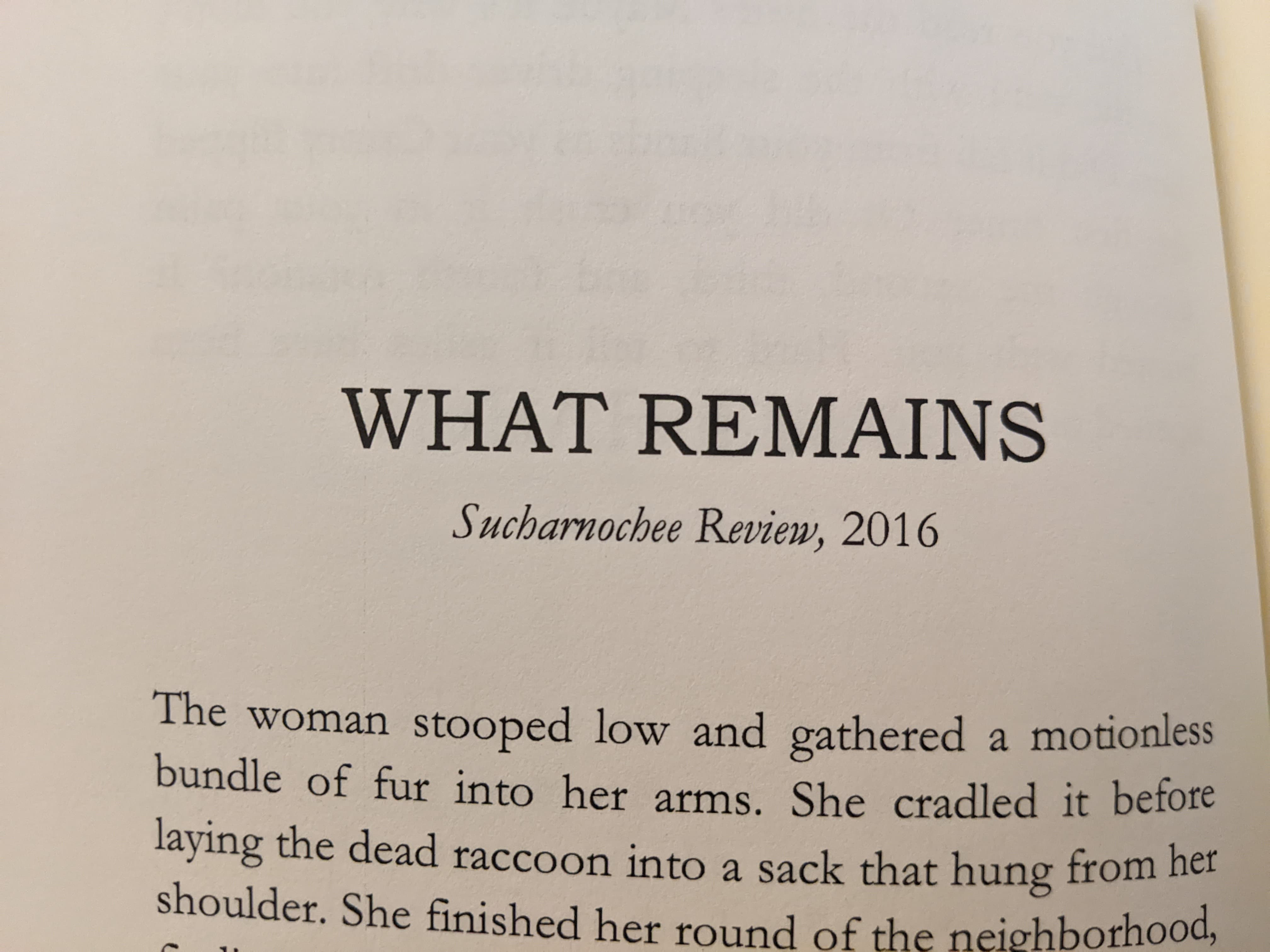
Some of my contracts stipulated that credit must be given to the original publisher in the case of republishing, so I simply indicated when and where they were published under all titles for consistency.
Writing is typically a pretty tough gig to turn a profit on, so it's a good idea to keep an eye out for ways to double-dip on a piece, like traditionally publishing them individually (for prize money and street cred), then self-publishing as a collection (for ongoing royalty payments).
How many poems are in a collection?
Typically, poetry collections contain anywhere from 20 to hundreds of poems. The standard minimum is 30 decently-lengthed poems. As a rule of thumb, the fewer poems you publish, the longer the individual poems should be. Some poets opt for poems a couple stanzas (or even a couple lines) long, while other poems can go for pages. The number of poems included will likely depend on the length of your individual pieces.
A better way to measure the length of your poetry collection might be in word count, rather than the number of poems.
How many words is a poetry collection?
The word range of a poetry collection can be quite wide, but the typical collection falls somewhere between 5,000 and 50,000 words.
Do poetry books sell?
Poetry books have the potential to make the writer lots of money. Factors that affect your income from a poetry book include popularity of the author, quality of poems, topical nature of the content, and marketing efforts. The biggest affecting factor will be the popularity of the author. With a platform, you can sell almost anything.
A great example of a successful self-published poet is $ Savannah Brown$ . She has three poetry collections, graffiti, sweetdark, and closer baby closer. Savannah has a massive platform that she built starting with YouTube, where she shared readings of her poetry as she learned to write as a young teen.

An author set up with a preexisting readership is likely to find massive success, as Savannah has. That means it's a good idea to start building an online platform, through whatever method makes sense for you and your writing.
However, having a platform doesn't give you a pass to write bad poetry or not put effort into your book! A platform + a good book = successful writer.
A platform + a low-effort book = getting roasted to hell and back in critical video essays for the next decade. But the second option also seems to make a ton of money, so who am I to criticize a successful business plan?
What is the average price of a poem book?
The average price of a poetry book varies based on the publisher, format, popularity of the poet, and market, but generally speaking, a paperback usually ranges between $10 - $20, while hardcover poetry collections can easily sell for up to $35. E-books and audiobooks are usually priced lower, as production costs are lower, so you can expect numbers between $5 and $15.
The way you price your collection depends on your goals. If you’re looking to build a readership with a debut publication, pricing somewhere on the lower end of the spectrum might help you out. If you already have a readership excited to buy your work, and you're in it for the money, you might price it a little higher.
How much does it cost to publish a poetry collection?
The cost of self-publishing a poetry collection can range from zero dollars to several thousand dollars. That’s quite a wide spectrum, and it depends on what you’re willing to invest in. Possible costs associated with publishing a poetry collection include editing, cover design, interior formatting, artwork, publishing platform, and marketing.
Here’s a video about how to self-publish your book for free (and not for free), if you're looking for a more in-depth explanation of costs associated with self-publishing.
Basically, self-publishing costs what you want it to cost—you just might come out with a worse product in some respect if you're not willing to invest any money upfront. Determine your goals before you begin, so you can strategize more effectively.
How to publish a poetry collection step-by-step
Here’s how to publish your own poetry collection from beginning to end.
1. Write your poems
The best way to write poems for a collection is to write a lot of them. You don’t necessarily need to know the theme of the collection when you start writing, but it's usually helpful to know. Oftentimes, the theme reveals itself as you collect pieces together. Since the recommended minimum of poems for a collection is 30, it’s reasonable to write 100 before you look back and cull to the best of the best.
I recommend keeping notes of possible cohesive themes and title ideas as you write. Hopefully, by the end of your writing process, you’ll know exactly what angle you want to take for publishing and marketing your collection.
Here's how my upcoming poetry collection currently looks in NovelPad.
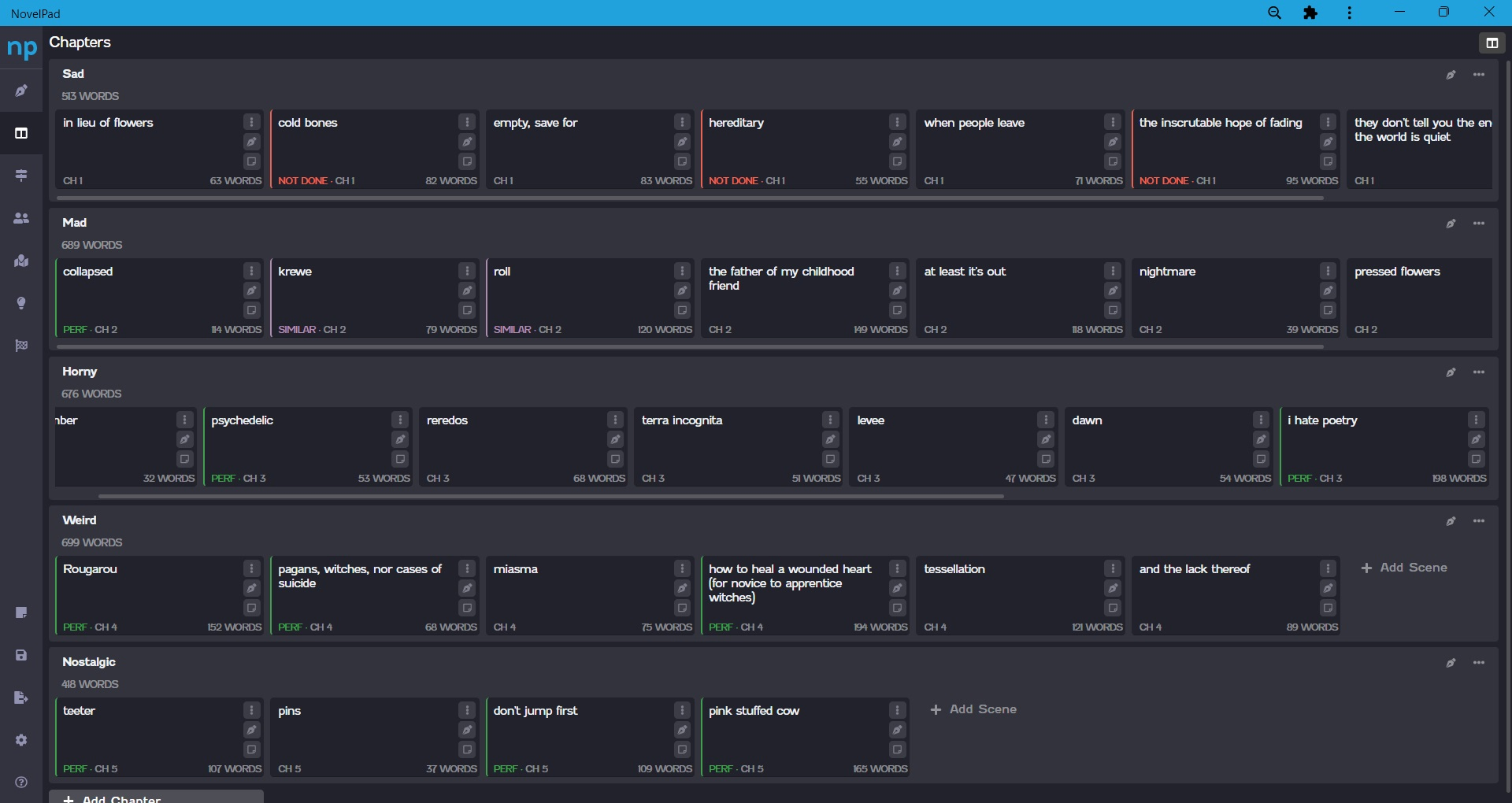
I try to organize the pieces as I write them. As you can see above, I'm sorting them by their basic mood. You might categorize by theme, especially if you're tossing up between a few different ones—that way, you'll see which theme you have the most and strongest pieces for.
Need some help getting those poems written? Try Escapril!
2. Select your poems
Once you have that big backlog of poems, it’s time to get down to business. Did you choose a theme? Your theme could be based on genre, tone, mood, style, subject matter, region, or anything else.
For example, $ Rhiannon McGavin$ ’s poetry collection Branches explores coming-of-age themes. Her second collection, Grocery List Poems, carries the premise of crafting poems with "scraps of the everyday, from dream diaries to postcards." While her first collection is unified by a life stage perspective, style unifies her second—essentially through "found footage" poems.
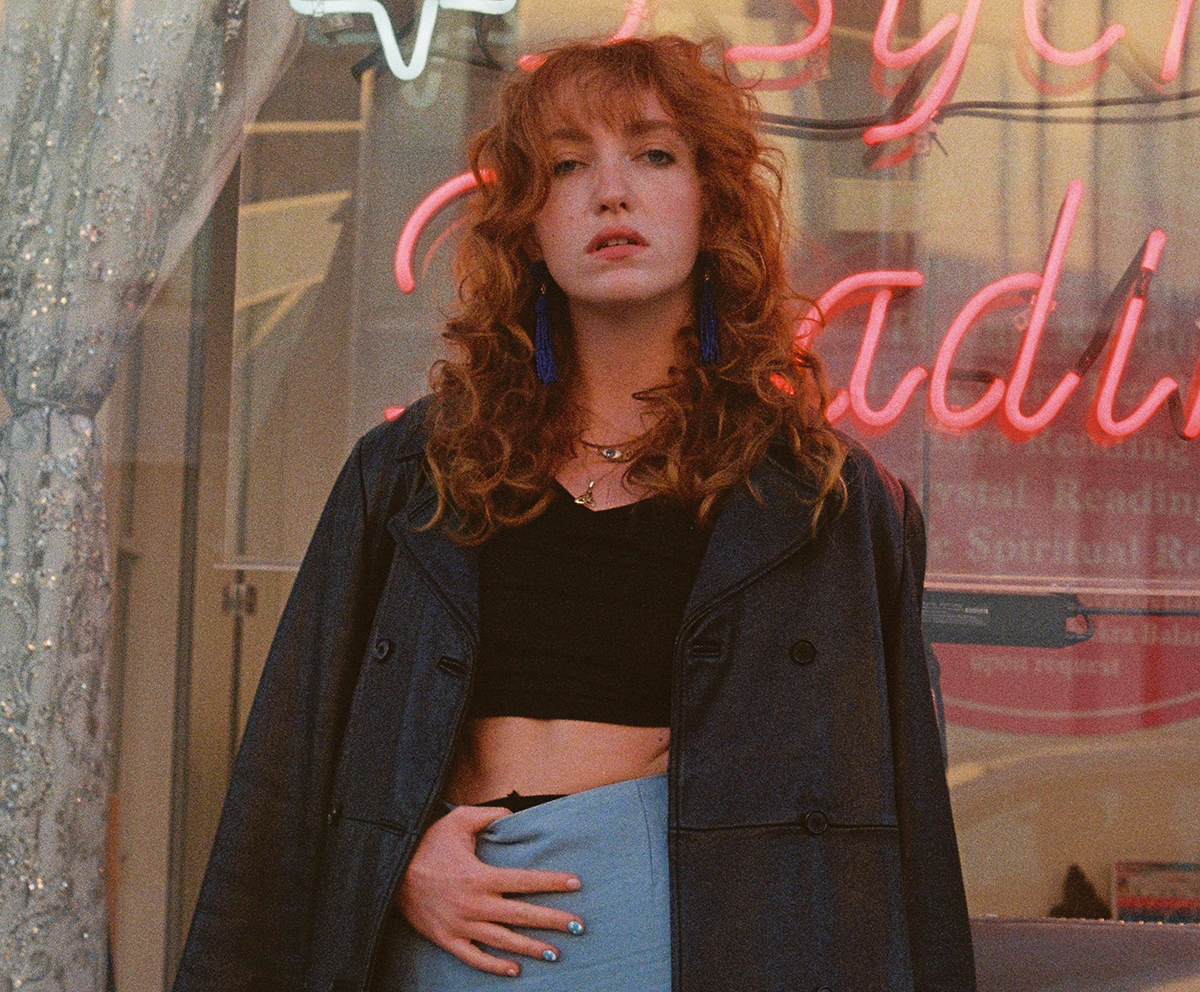
If you know your theme, your next job is to pick the strongest pieces in your poem pile that adhere to that theme. It doesn’t have to be a direct connection every single time, but your collection will be stronger and easier to market if you have a theme you can name.
Don't throw out the poems you don't use! It's so wild that some writers do that. Always save them. Anything can be reworked, even if it's just borrowing a single line from a discarded poem and building a new one around it.
3. Organize the poems
When we have our poems selected, it’s time to decide the order. A few things to keep in mind when you’re deciding the order of poems are the first poem, last poem, and diversity throughout the book.
The first poem should be strong, gripping, and a good representation of the rest of the collection. Opening strong is essential to grab your reader’s attention to finish reading the book.
The last poem needs to be strong and memorable, and it’s nice when it ends on a ring that resonates with the rest of the collection. The last piece is often what readers remember the most, so end strong to solidify their good opinion.
For diversity throughout the collection, you’ll want to ensure that you don’t have poems that are too similar to each other really close together. You can have poems that resemble one another in some ways, but make sure you spread them out, so it doesn’t come off as repetitive.
You also might want to consider the mood of each piece. The "roller coaster" of a novel refers to when a chapter begins on a high note and ends on a low note (or vice versa) can also apply to collections. If you have one poem that’s a bit of a downer, you might want the following poem to be bright or uplifting. This movement of emotions is what makes a book impossible to put down.
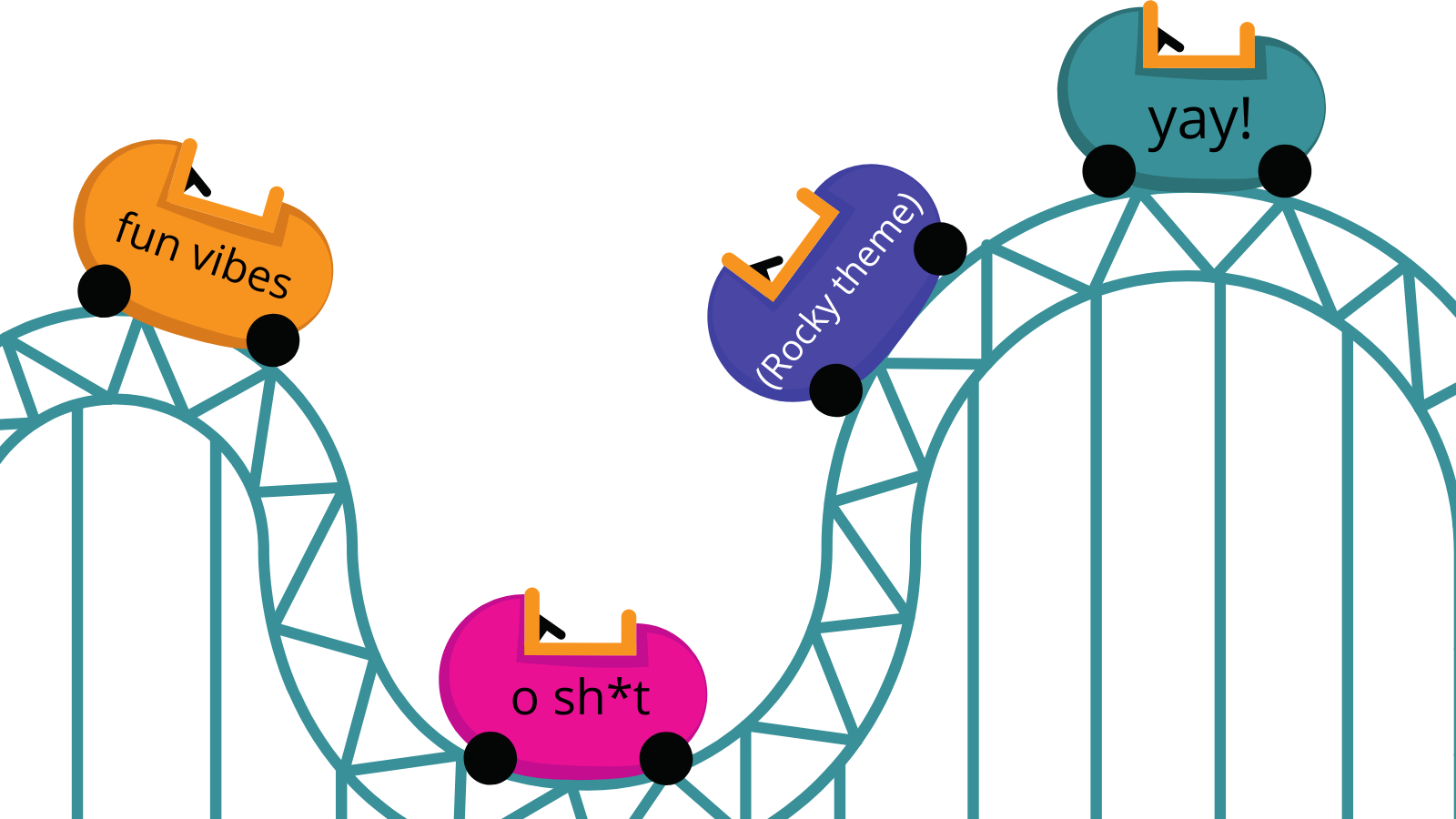
4. Get some opinions
When your collection is stapled together, it’s time for some outside opinions. It’s a great idea to have a writing partner or a group of beta readers review your collection and give you their honest opinions. It’s easier to get feedback now, when there’s still time to make alterations, rather than seeing those opinions in reviews when it’s too late.
You can share your collection via Google Docs, Microsoft Word, or NovelPad.
Google Docs
Set your share link so "anyone with link" is a "commenter".
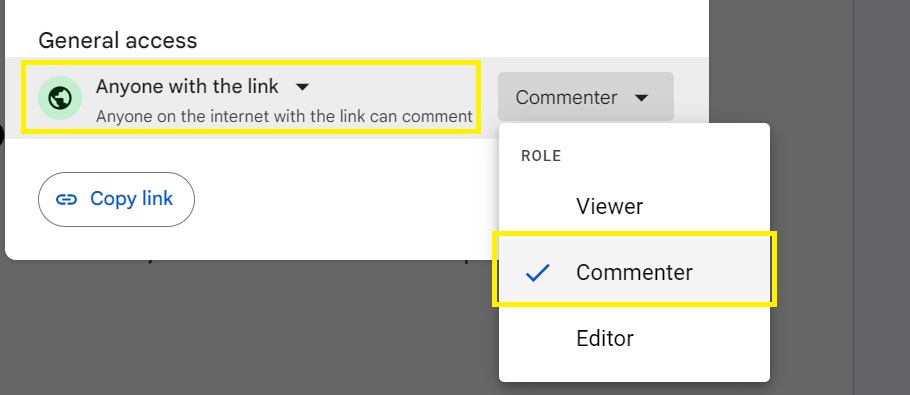
When your writing partner receives the link, they should change from editing to suggesting mode so their comments and edits will be listed as suggestions that you can review.

Microsoft Word
If you’re sharing through Microsoft Word, your writing partners should go to the Review tab, then set "track changes" and "all markup" for you to see their edits when they send it back.
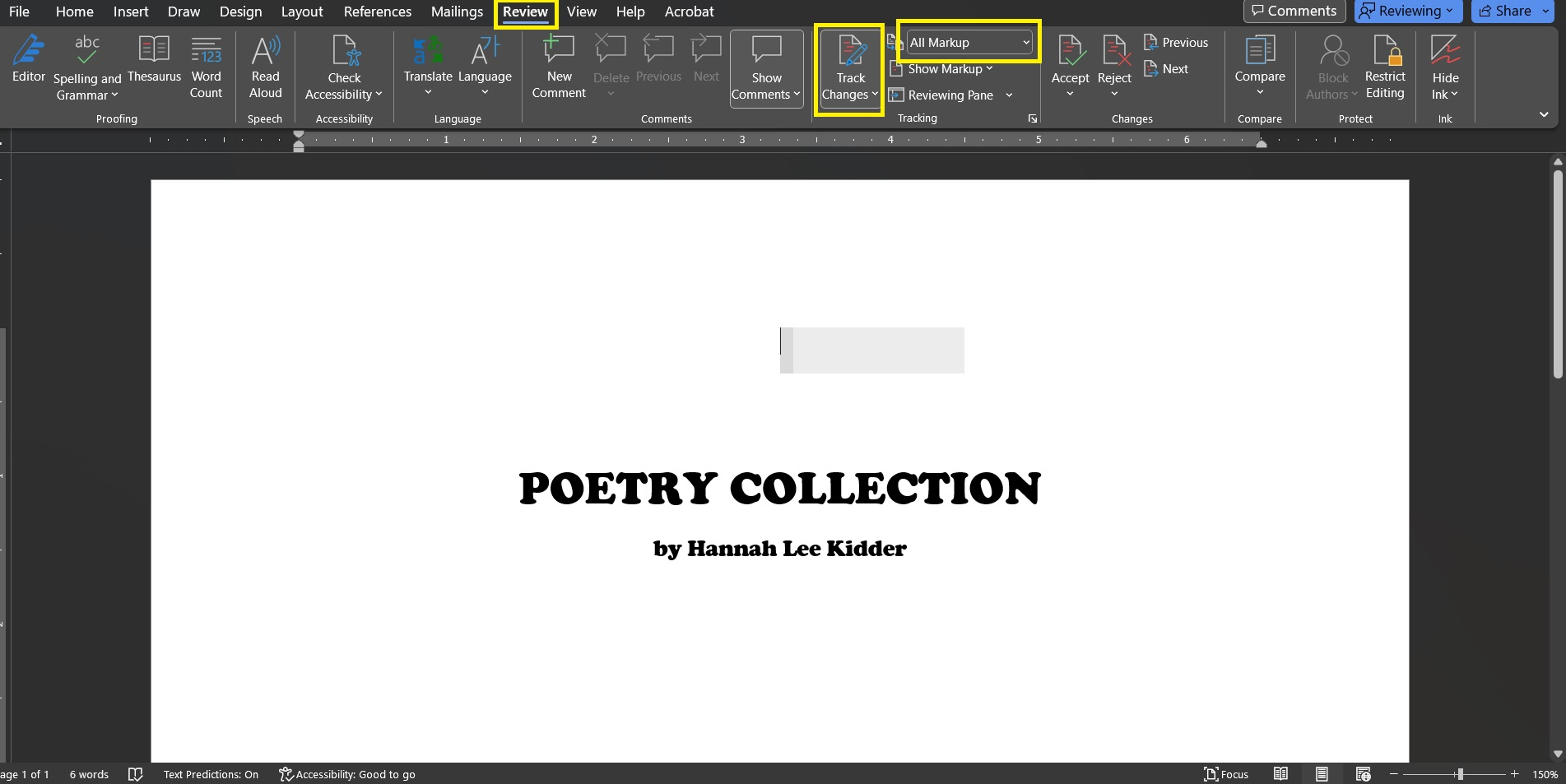
NovelPad
Click the menu option on the piece you’d like to share, then "open share settings," and create your link. Your writing partners will be able to leave comments, highlights, and edits, then you can merge the documents if you’d like to take all of their suggestions.
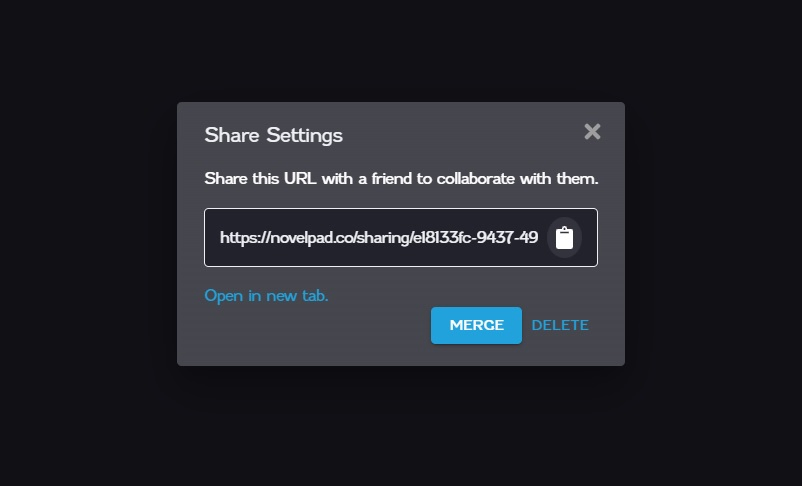
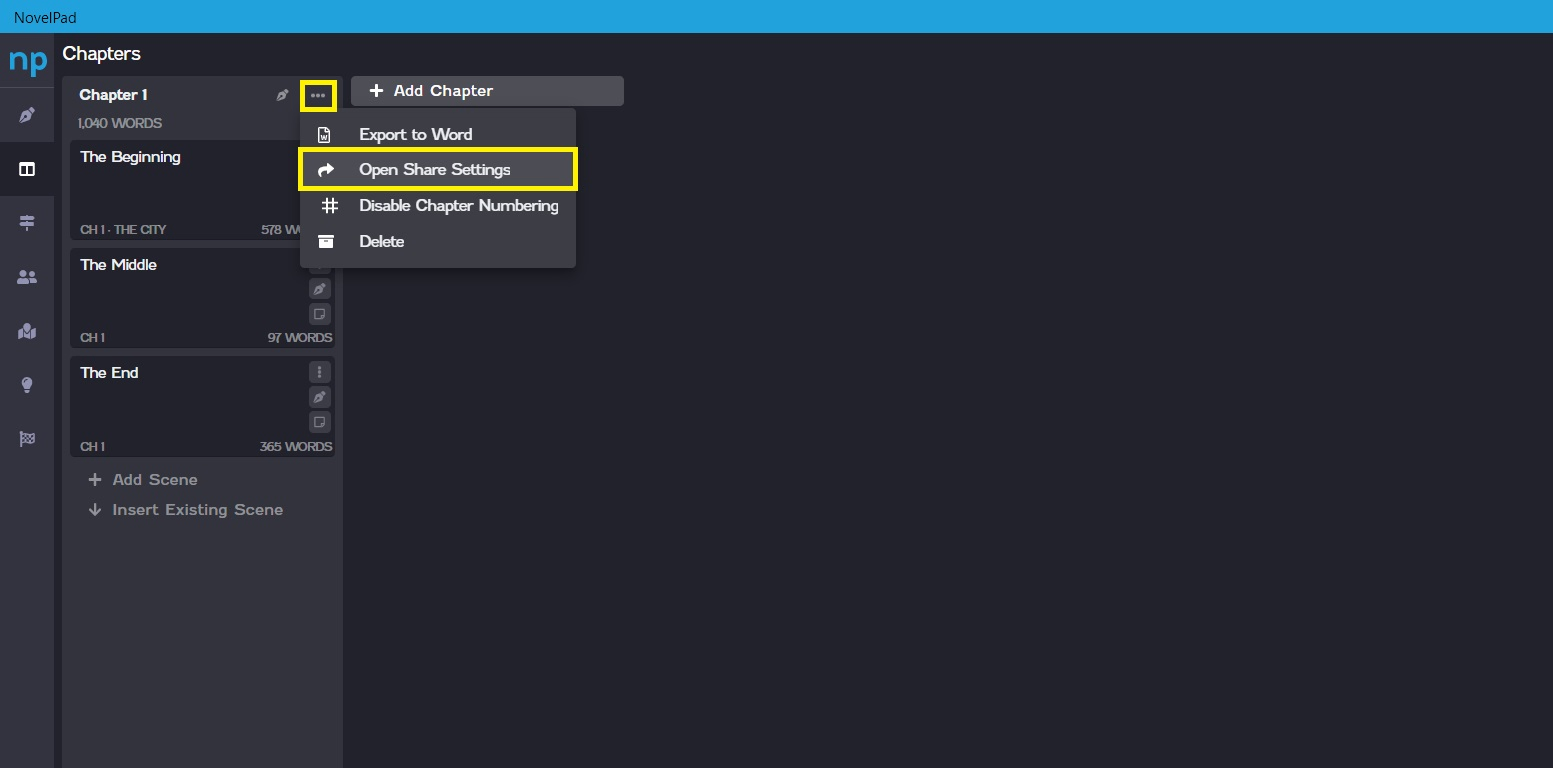
The way you get your feedback is up to you, but the important thing is that you get some outside opinions before you think about publishing.
5. Edit the poems
With some time to reflect, and notes from your critique partners and beta readers, it’s time for the proper edit. Make the bigger changes first—rearranging, deleting, or significantly changing the poems. Then go through for the line edit, where you make sure your lines, enjambment, word choice, titles, and everything else are exactly as you’d like them to be.
Next up is a copyedit. You’ll likely run a proofread yourself to catch typos and mistakes, but it’s also helpful to hire a professional editor for at least this step. If you don’t have the budget for an editor, have a couple friends (preferably strong readers) look it over after you have.
6. Design the poetry collection
Designing a poetry collection can include the interior format, cover design, and possibly interior artwork. For my collection, $ Starlight$ , I designed the interior myself with this $ InDesign class by Nadege Richards$ .
It took me a few weeks to learn the software, but now I have the skills required to do my own interior design. That saves lots and lots of money in the long run, so learn some new skills! It will serve you well.
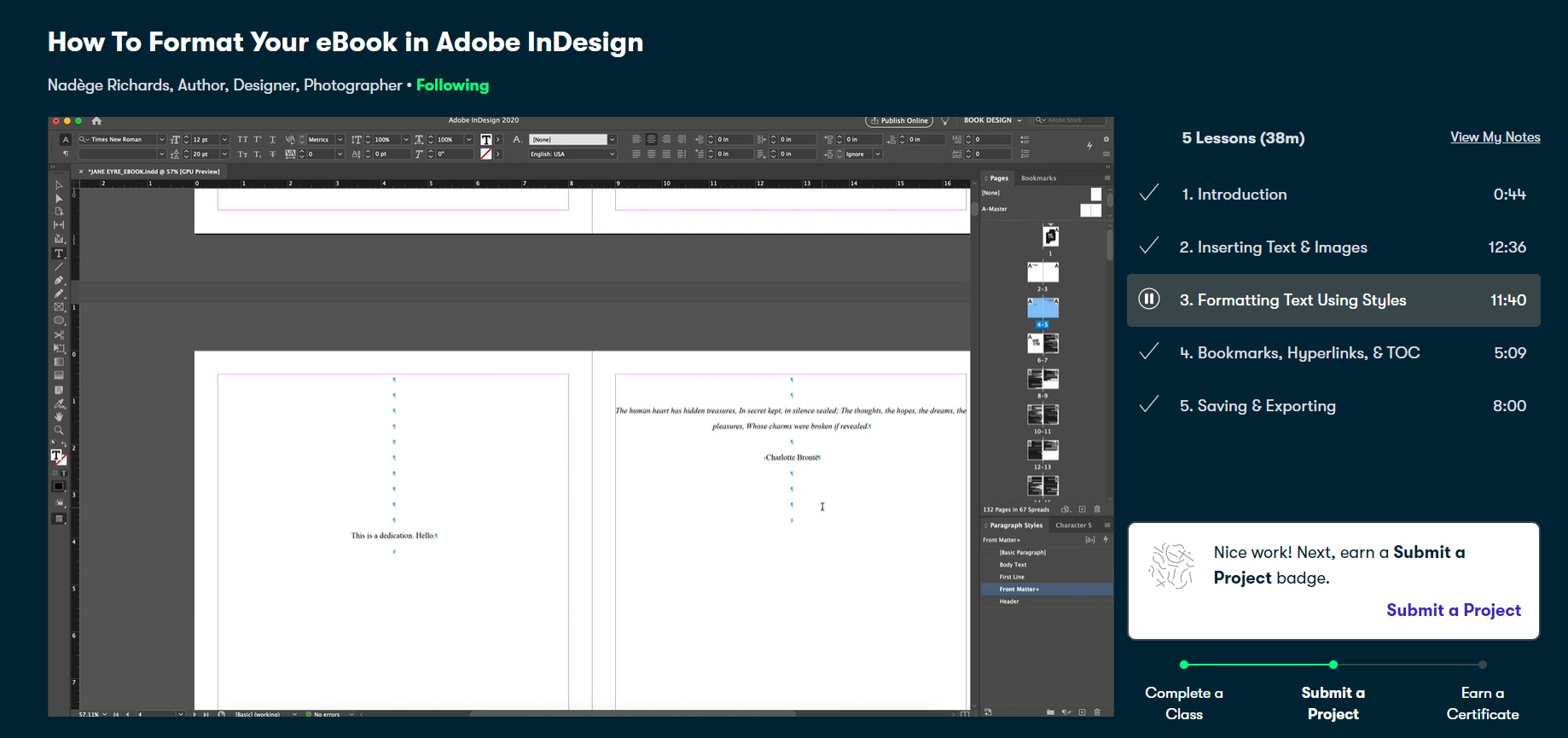
Nadege's class takes you through the process step-by-step in an easy-to-follow format.
For the interior of this book, I also included artwork, which I commissioned from my friend, $ Rosalyn$ .
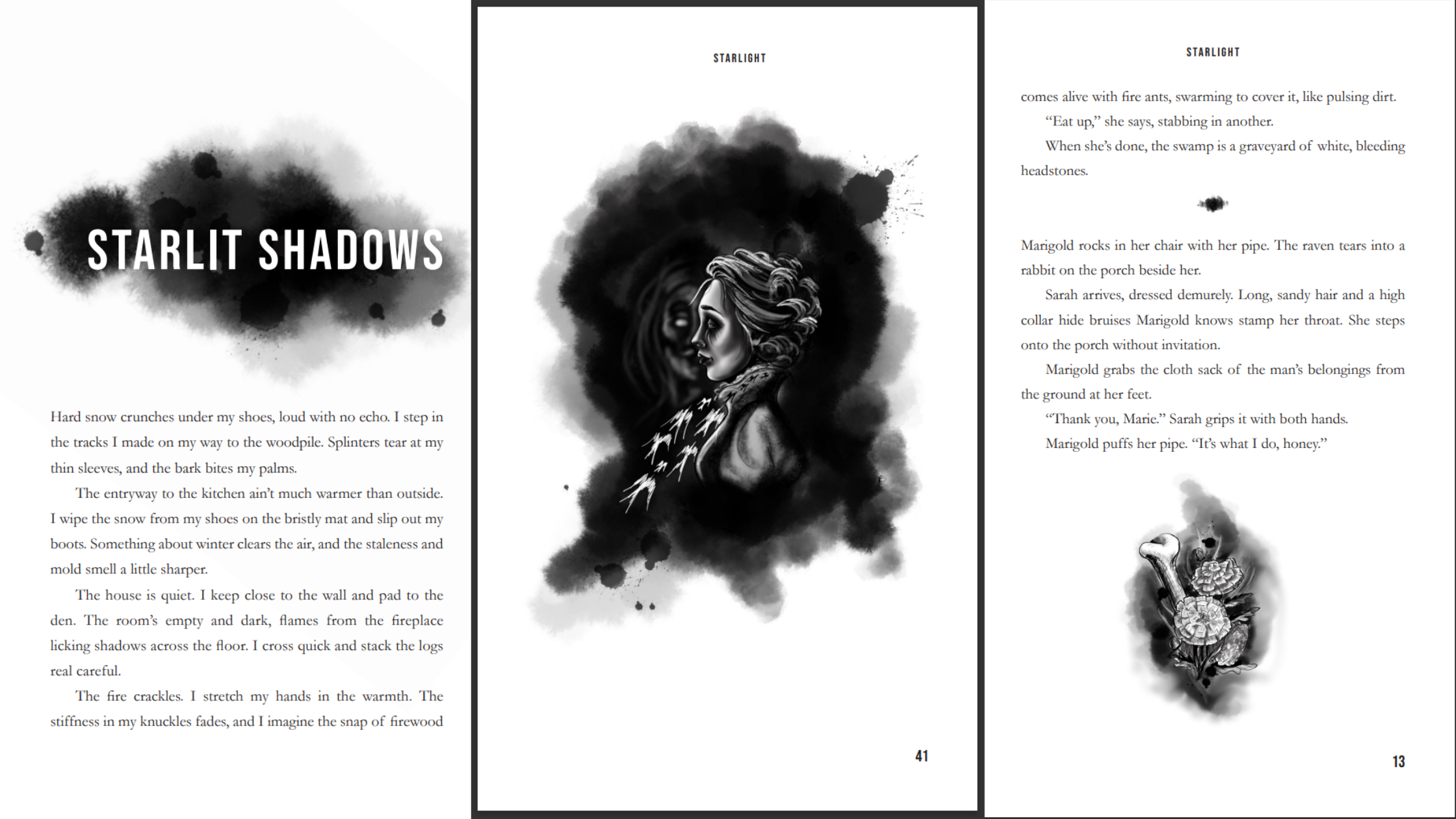
While I was able to manage interior formatting myself, I did hire a professional designer for the cover, because cover design was not my strength. It’s important to have a designer who is both versed in actual design skills, but also is up-to-date with current genre trends. If that’s you, wonderful, you’ll save yourself some money. If that doesn’t sound like you, you’re probably better off hiring someone else to do your cover design. After all, a cover is your strongest marketing tool, so investing in it up front can result in significantly more sales.
As an example, here's the sketch I sent my designer of what I thought I wanted for my cover:
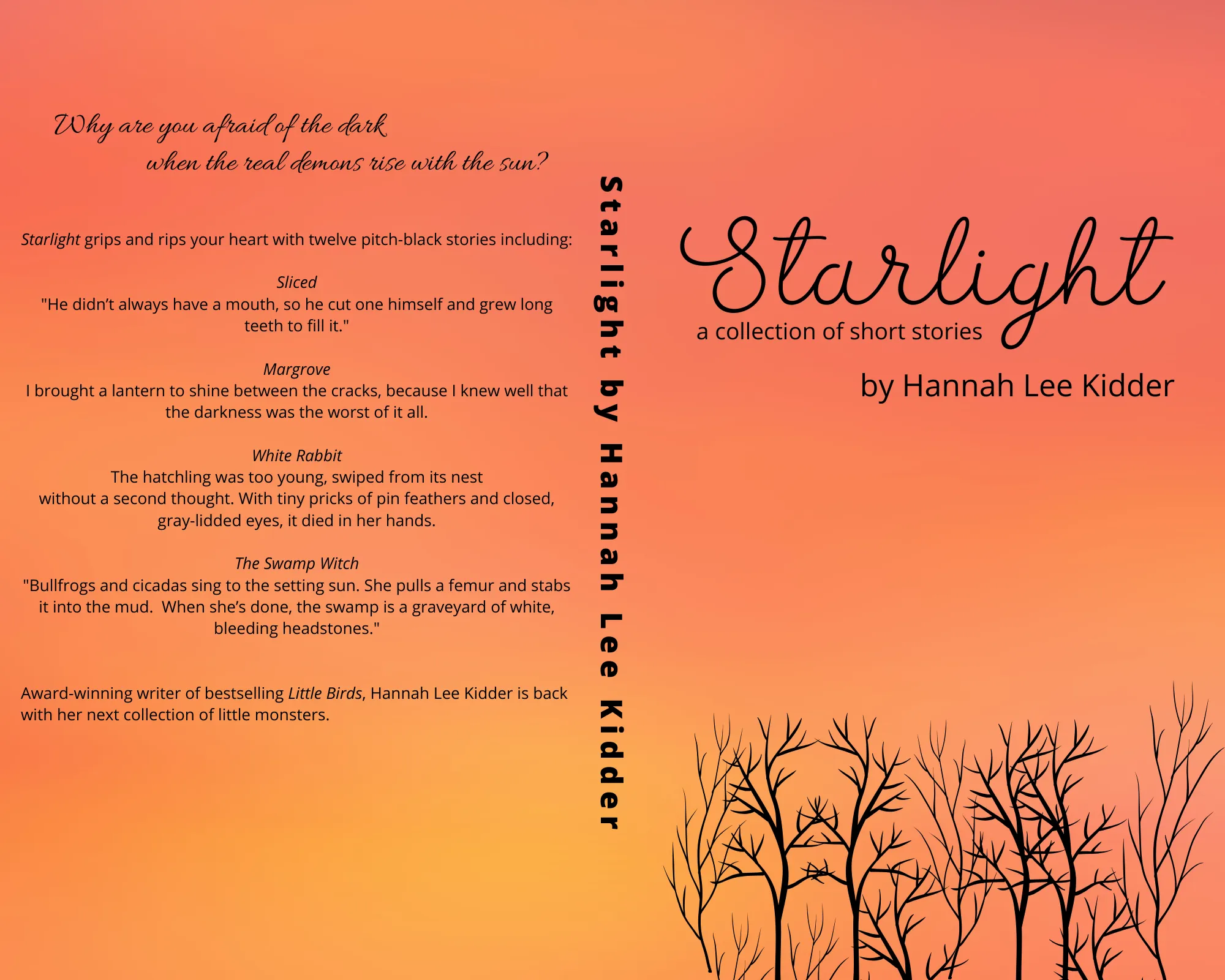
And here's what we ended up with, based on my designer's expertise:
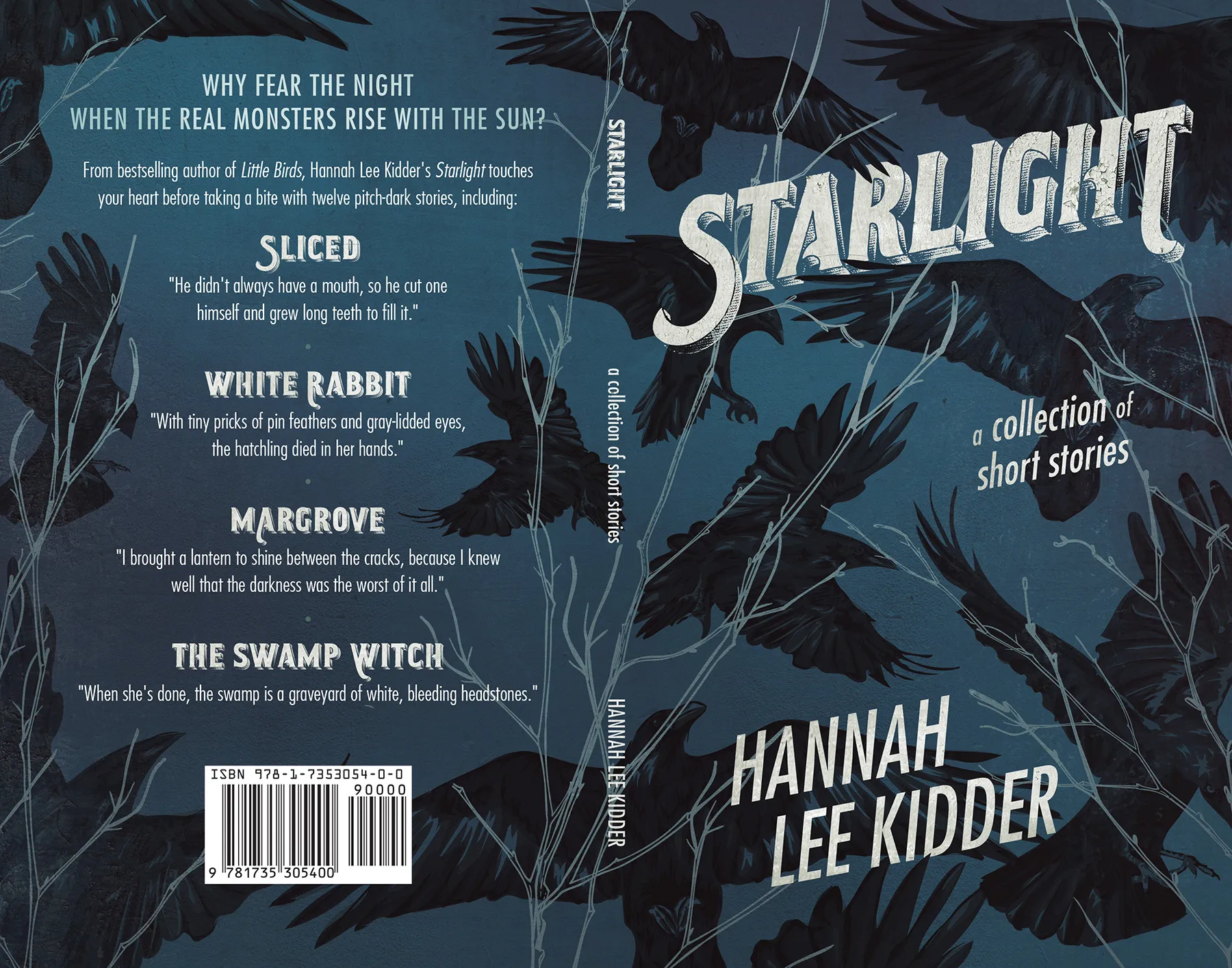
They're pretty different, right? The only visual element that dragged over was my spindly trees. A good cover designer will guide you in creating a cover that represents your book, makes you happy, and appeals to your target demographic.
7. Upload and order proof copies
So now everything is edited, sorted, and designed. It’s time to upload! The venue you choose depends on your goals and preferences, but here are a few common options for self-publishing:
KDP (Kindle Direct Publishing)
The good thing about KDP is that it’s free and easy. The bad thing is that it’s owned by evil evil amazon.
IngramSpark
The good thing about IngramSpark is they allow preorders on paperbacks (where many services only offer preorders on ebooks). The bad thing is that they’re convoluted, non-intuitive, and their customer support is abysmal.
Other options include Apple Books, Barnes & Noble Press, Kobo, Smashwords, and Draft2Digital.
Selling from your own site is also an option, though it's complicated and time consuming. I really don't recommend printing and selling yourself, unless it's something like signed copies or other premium versions that require personalization or your involvement. Otherwise, it's more hassle than it's worth, and you'll sink a lot of time and money for not much reward.
Once you decide how you’re publishing, you order proof copies. Often, books don’t look quite as good in print as they did on your computer screen. That's why we order a copy before the book is listed, just to make sure everything is as it should be. This is your last chance to find remaining typos, bleed and formatting issues with printing, and anything else that might be off.
8. Final review
Again, I recommend getting a few pairs of eyes on your proof copy. If a significant amount of things are wrong with it, you might order an additional proof copy after you’ve made those changes.
Be sure to sleep on it, and read through the whole collection several times across different days. The earlier in the process you can find those errors, the better.
9. Publishing your poetry collection
If all is well, it’s time to start making some money! There are several things to consider before hitting publish, most to do with marketing.
Here’s a checklist you’ll want to see to before your book is even available for preorder:
ARCs—send out Advanced Reader Copies to strategic people (professional reviewers, reviewers of your genre, readers who already love your work, people with large platforms). This will help you get some reviews up before your book is available. Readers are much more likely to buy books with reviews, so boosting it up with reviews ahead of time can help you get more sales out the gate.
Description—put some effort into your book’s description. Don’t be shy here—sell it! Describe the themes and vibe, add a few of those advanced reviews, talk about your previous accolades (if available and relevant).
Metadata—do your research to see what categories, subcategories, tags, and other metadata information will help your book sell the best to your target demographic.
Social posts—backlog lots of promotional posts for your socials (and your street team’s socials). The more you can do ahead of time, the easier the launch and marketing will go.
Press kit—a press kit is a document (or folder) you put together ahead of time to send out to review sites, news sites, interview opportunities, and any other marketing route you decide to take. It typically includes elements like a high-quality image of your cover, author and book information, blurbs, genres, trigger warnings, review quotes, and promotional images.
10. How to sell a poetry collection
There are many marketing routes you might take for launching and selling your book. Here are just a few elements to consider.
Street team
A street team is a group of volunteers who help you promote your book, usually during the preorder and launch segment of your marketing campaign. They might be fans of your previous work, writing partners, beta readers, or your mom and her best friend Gail.
They might do things like post reviews, make social media content, call their local libraries and bookstores to request your book, or anything else you can think up to boost your sales and visibility.
Be sure to structure a clear plan for your street team to follow, and don't forget to thank them (and award prizes for participation).
ARC reviews
Advanced Reader Copies are a great way to start stockpiling reviews before your book launches. Be strategic and aim for reviewers who you know already love your writing, have large platforms, or are known reviewers. They don't all have to be a super valuable a reviewer, but it's good to drop a few big names in if you can.
ARC reviews can also give you content for your book description and promotional materials.
Paid ads
Paid ads are a route many authors take, though they work better for some genres than they do for others. Do a little research on your genre or niche to see if paid ads are a logical option for your book. Paid ads likely aren't the ideal way to market a poetry collection, but everything is worth trying once.
Social posts
Social media are a great tool for authors, because they're free, accessible, and you have a chance for major visibility. The best way to go about book promo on social media is to plan out as much ahead of time as you can—creating graphics, writing captions, scheduling posts, etc. It's easy to get overwhelmed during a book launch and the intense marketing efforts afterward, so front-loading your work beforehand is a good habit to start.
Online events and games
Especially if you have a platform already, hosting online events is a great way to build hype for your book. You can livestream on YouTube, Twitch, TikTok, or your favorite social medium, play games with your audience, host giveaways, and anything else that would be interactive and engaging.
Preorder giveaways
Preorder giveaways are huge. They are the best way to rack up those presales before your book is available. More on preorder giveaways later, so keep reading.
Post previews
Whether you're a known author or a brand new baby debut, posting excerpts of your project can pique people's interest. Poetry collections are perfect for this, because you can share entire poems in a small space. With novels, you have to pick and choose tiny excerpts to represent an entire scene. Sharing an entire poem is an easy way to give a really good preview of the collection.
Tips for publishing a poetry collection
Now that you have the technicalities of a poetry collection down, here are my biggest tips that I would like to reiterate.
1. Set goals
Knowing what you want to get out of the project will help you with every step of the strategy. Are you publishing to build a platform? Are you doing it for money? Know why you’re publishing, then set smaller goals. Goals might look like:
• # of preorders
• # of reviews for the first six months or year
• General revenue goal (this is trickier, since you can’t necessarily control it)
• # of promotional posts to make
• # of newsletter signups (dropping some sort of Call To Action at the end of your ebook is a great idea—it might be a link to buy another one of your books, a way to follow you on socials, or a newsletter signup)
Be sure to track your progress and update your goalposts as it makes sense to do so.
2. Nail a solid theme
A good, describable theme for your collection will massively help in the marketing of it. For Savannah Brown’s closer baby closer, her general theme is Horniness. (Admirable, good for her.) Here’s an example of a social post she made to promote the book.

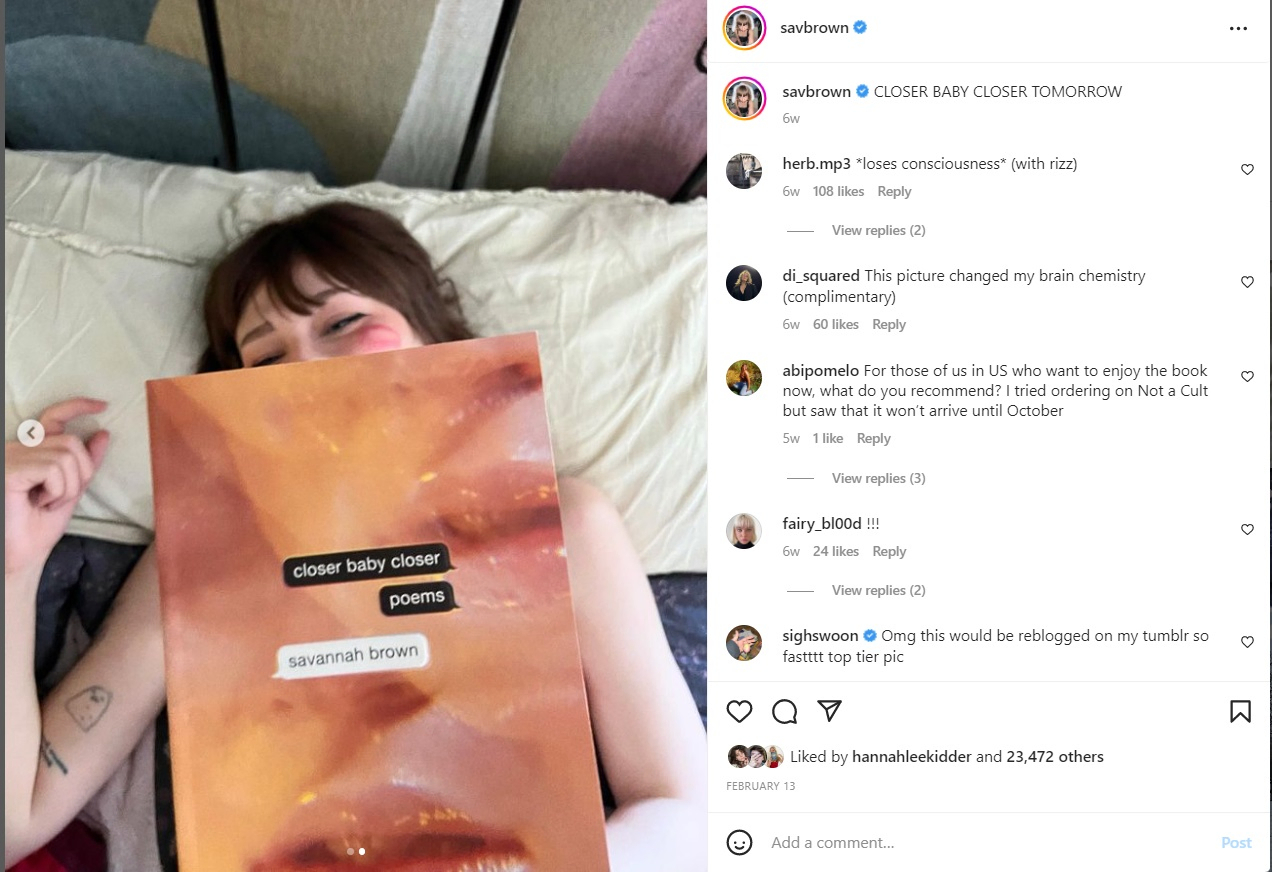
My collection Starlight had dark themes and a few pieces of horror—here’s a snapshot of what my Instagram feed looked during my presale period.
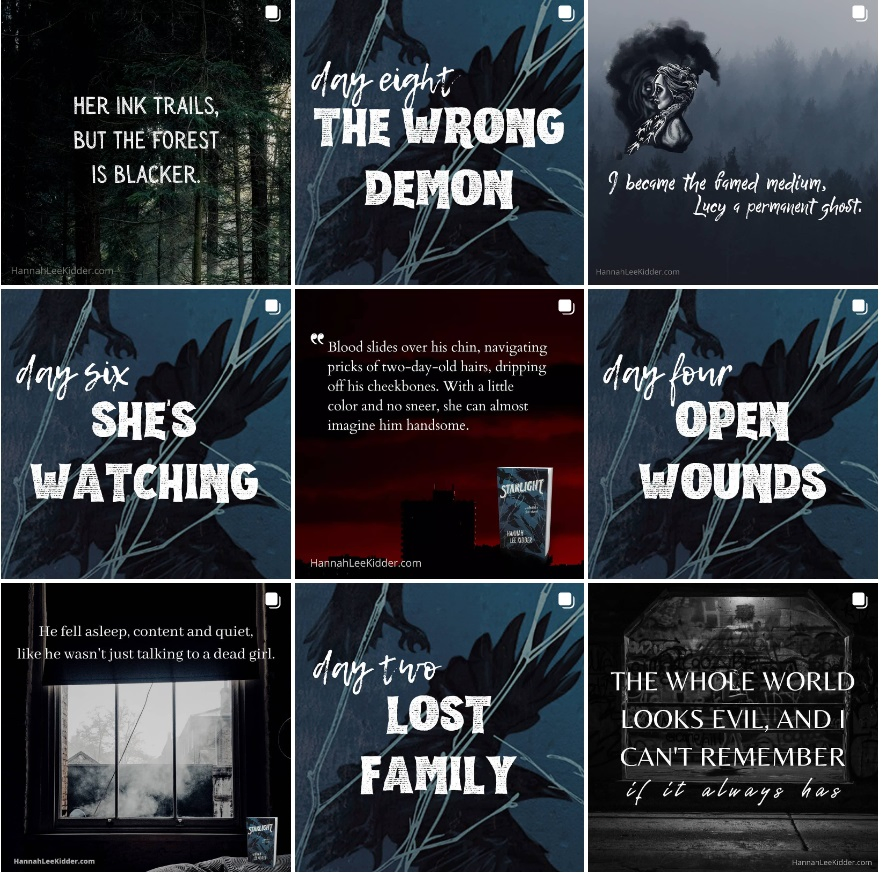
Not only is having a theme good for elevator pitches and ad copy, but it can also help you create a cohesive aesthetic across your promotional material. The more focused your theme, the easier to market.
3. Build a platform
Nothing has been more valuable for me as an author and entrepreneur than having an online platform. No matter what I choose to pursue, I have a group of people to tell about it, lots of whom are eager to support it.
It can be difficult to get started, but the trick is to experiment with a few different ways to build an audience, then stick with the ones you find the most enjoyable and fulfilling.
For me, my biggest platform is my YouTube channel. I make videos sharing what I've learned about writing, what I know of marketing, strategies any author can use, as well as stupider videos that are just for fun, like my Twilight Rewrite series.
Through my videos, I've built an audience of over 30,000 people, and that's enough to do pretty much anything. Don't think you need those 2 million + member audiences to reap the benefits.
Here are a few ways to build an author platform:
• YouTube - Create videos, preferably related to the content you write, to attract people to your platform. Don't forget to feed them links that can solidify them as members of your audience, not just random passerbys.
• Instagram - Instagram offers the opportunity for educational, inspirational, and entertaining content in many formats, like reels, photos, interactive activities, livestreaming, and more.
• TikTok - TikTok is an incredibly popular platform for writers. It's intimidating for a lot of people, but dip your toe in the writer/reader community to see if there's a gap your content can fill.
• Skillshare, Udemy, and other course platforms - If you have a teachable skill (writing-related or not), you might consider creating a few online courses. This is a great opportunity for passive income, but also a way to get your name out there by providing helpful content.
• Newsletters - A mailing list is very important, but it can be difficult to grow your list. A popular method is linking sign-ups in content you create, particularly blog posts. If you write about a topic (writing, your book niche, etc.), you can offer a related item (a list of writing prompts, a social media template, a guided activity) for anyone who clicks through and signs up for your newsletter. This is an easy way to grow your mailing list, plus you're providing your subscribers with helpful content that applies to their interests!
• Freelance writing - Writing freelance is a popular way for poets to make extra money. There are typically much fewer income opportunities for artistic writing than there are for technical and copywriting. Consider offering to write guest posts for websites (particularly blogs related to your niche), if you don't have a portfolio and need to get your foot in the door. Most websites will let you link your own content when it applies to the post and is not directly competing with their own links. Eventually, you'll be able to charge for those posts, while also filling them with your own backlinks.
4. Hire a professional designer
I mentioned this a few times, but it bears repeating: An important step in publishing your poetry collection is to hire a professional graphic designer for your cover, unless you are a professional yourself. If you invest money anywhere, I recommend investing it here, because a good cover will sell your book more effectively than any other marketing technique.
5. Edit carefully
Whether you're self-editing, recruiting friends, or hiring a professional editor, don't skimp on the editing process. If you don't want to put money toward it, put time. A clean, well-made book will serve you better in the long run. A pretty cover and strong marketing strategy might sell a few bad books, but the reviews afterward can tank you.
6. Host a preorder giveaway
Preorder giveaways have been one of the most effective marketing tools I've ever used for book launches. It's a great way to build up hype before your book drops, get people interested, and give back to your readers!
I recommend doing a consolation door prize for every single person who preorders and enters (an easy one for this would be a document with 5 or so poems from your collection that they can read right away), then giving away some bigger prizes to random entries.
When I ran my last preorder giveaway, I sent every participant three deleted stories from my collection, then gave away a bigger prize once a week, like a signed typewriter poem, other books, manuscript critiques, pretty notebooks and pens, etc. They don't have to be super fancy gifts for your audience to be excited about it.
7. Watch this class
If you'd like to see the entire process for a real book, beginning to end, here's a course I made all about publishing a collection. Use $ this link $ to get a free month of Skillshare! You can take all of my classes plus tons more in that amount of time—be sure to cancel before the month is up, if you don't want to keep the service, because they charge automatically the following month.
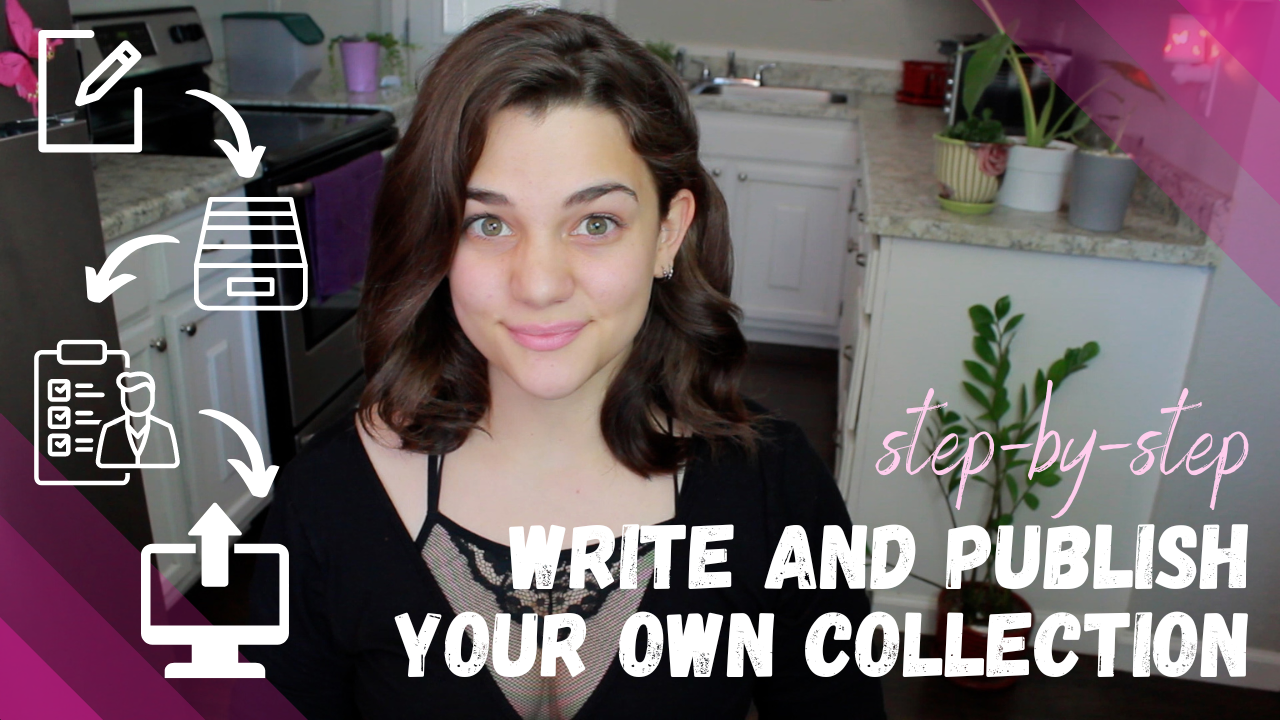
8. Utilize the poetry book for audience building
Anytime you create some type of consumable item or content (ebooks, videos, social posts, online courses), it is an opportunity to drive viewers toward other things. If someone watches a video you made, enjoys it, leaves a like and maybe even a comment, then goes about their life, you've missed your chance. In the beginning of the video, you could give a quick message about a book (or other product) you have available, then go on to be entertaining or informative.
That person now has somewhere to go after they've finished watching the video. If you link your socials in the description, they might open that and skim while the video plays. If you leave a newsletter signup in a pinned comment below the video, it's easy to click—bonus points if you can make it relevant to the video.
For example, in my Twilight Rewrite videos, I link my newsletter signup. Everyone who signs up through that particular link receives the first ten chapters of the rewrite in PDF format. If they're watching the video, they probably like the content, so they would likely enjoy a convenient place to read it all at once, and now they're on my email list for me to send them more content.
Don't miss out on those free opportunities to promote yourself—that's how platforms are built.

Writing and publishing a poetry collection can be quite a challenge, but the potential rewards are worth the effort. Regardless of your subgenre, budget, or goals, you can build a strong publishing strategy that works.
Grab that bag, and happy writing!
Like what you're reading?
Join other authors like you in NovelPad’s free writing community!
Join the communitySimilar Posts
What File Formats are Accepted by Kindle Direct Publishing?
File types for ebooks, paperbacks, and hardbacks on Amazon's KDP.
Ollie Ander
Is probably just a couple cats in a trench-coat—the hair shedding and sunlight napping are highly suspect.
What is a ghazal? The essence of emotion in poetry
Definition, examples, and history of the ghazal poem.
Hannah Lee Kidder
NovelPad Author
How To Write Strong Atmosphere In Stories
7 best tips for creating strong atmosphere in your writing.
Hannah Lee Kidder
NovelPad Author
How long is a Science Fiction Book?
How many words, chapters, and pages should be in your sci-fi novel?
Ollie Ander
Is probably just a couple cats in a trench-coat—the hair shedding and sunlight napping are highly suspect.
When is the best time to publish a romance novel?
What is the best month and day of the week to publish a romance? Do romance novelists make money?
Rina Fontes Malka
A writer with too many ideas and not enough time.
How to Publish on Kindle Unlimited | A Comprehensive Step-by-Step Guide
Everything you need to know about enrolling your book on Amazon's Kindle Unlimited.
Ollie Ander
Is probably just a couple cats in a trench-coat—the hair shedding and sunlight napping are highly suspect.